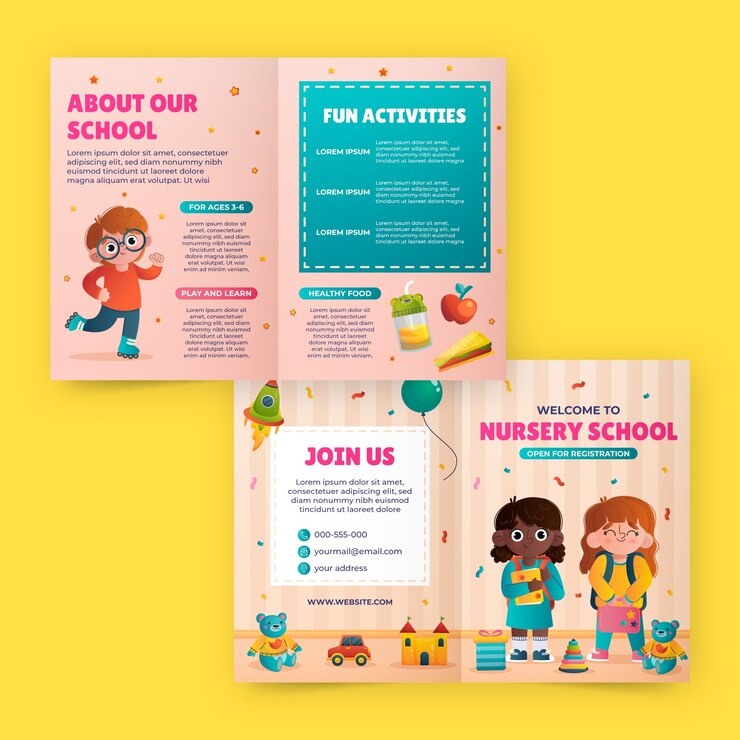The strong preschool program is essential for a child's early development. A comprehensive parent handbook is key to ensuring a successful preschool experience. This preschool parent handbook is a vital tool. It helps foster a partnership between parents and the preschool. By including key information, the handbook can supercharge your preschool program.
In this blog, we will explore important benefits of the preschool handbook which can help you ensure that you are giving a good preschool to your kid.
The Pivotal Role of the Preschool Parent Handbook
It is designed to be a comprehensive guide that helps you, as a parent, understand the policies, procedures, and regulations governing this early childhood education facility. It is a valuable resource, providing detailed information about the daily operations, educational objectives, and supportive systems available within the preschool program.
By familiarizing yourself with the content of this handbook, you will gain a deeper understanding of how the facility is structured to comply with the mandated regulations while prioritizing your child's holistic development and well-being.
Here we discuss nine essential advantages of the parent handbook:
1. Enrollment and Admission Policies
This guide outlines the enrollment process, including application requirements, tuition fees, and any available financial assistance or scholarship opportunities. The handbook provides a step-by-step guide to help you navigate the admission process smoothly.
2. Daily Schedule and Routines
The handbook explains the daily schedule, including class times, nap/rest periods, meal times, and outdoor play. It emphasizes the importance of consistency and how the daily routine supports your child's cognitive, social, and emotional development.
3. Curriculum and Learning Objectives
In this section, the handbook describes the preschool's curriculum, highlighting the educational approach, learning domains (cognitive, language, physical, social-emotional), and specific objectives for each age group. This information will help you understand the program's educational priorities and how they align with your child's needs.
4. Health and Safety Procedures
It also outlines the school's health, safety, and emergency protocols policies. It includes information on medication administration, sick child policies, emergency evacuation plans, and any required immunizations or health forms.
5. Behavior Management and Discipline
The handbook explains the preschool's behavior management approach, including positive reinforcement, age-appropriate consequences, and strategies for addressing challenging behaviors. It emphasizes the commitment to creating a nurturing and supportive environment.
6. Parent Involvement and Communication
This section encourages your involvement by outlining volunteering opportunities, attending school events, and regularly communicating with teachers. The handbook also details the communication channels, such as parent-teacher conferences, email updates, and online portals.
7. Meals and Nutrition
The handbook informs you about the school's meal and snack policies, including dietary restrictions or allergy protocols. It highlights the importance of healthy eating habits and how the preschool supports nutritional education.
8. Transition and Arrival/Dismissal Procedures
The parent handbook describes the procedures for dropping off and picking up your child and any transition plans for new students or those moving from one class to another. It emphasizes punctuality and provides guidelines for carpool or walk-in arrangements.
9. Extracurricular Activities and Field Trips
In this section, the handbook outlines the preschool's extracurricular offerings, such as music, art, or language classes, and any field trip opportunities. It explains the permission and transportation policies for these enrichment activities and more.
Therefore, a well-designed preschool handbook provides clear guidelines and demonstrates your preschool's commitment to transparency, communication, and the holistic development of each child.
Conclusion
By incorporating these essential factors into your preschool parent handbook, you can create a comprehensive resource that empowers parents, fosters strong partnerships, and, ultimately, enhances the overall quality of your preschool program. A well-designed parent handbook provides clear guidelines and demonstrates your preschool's commitment to transparency, communication, and the holistic development of each child.
Empower your child's early education with Kidsville U.S.A. Discover the key to a solid educational foundation in our easy-to-follow parent handbook. Join us now and participate in your child's journey to excellence.


No comments yet